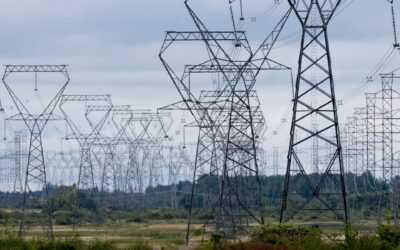This article was previously published in the National Newswatch.
Canada is at a fork in the road when it comes to climate change.
The country is experiencing its second-worst wildfire season on record, which has burned through nearly 9 million hectares of forestland, upended communities, and sent giant plumes of toxic smoke into major urban areas, affecting millions of people.
Yet even as Canada faces worsening climate-fuelled disasters, it is also on track to miss its next target for reducing carbon emissions.
Research from the Canadian Climate Institute shows that Canada made no progress reducing its emissions last year. Some sectors, like electricity and buildings, continued to make modest cuts in carbon, but that was countered by rising oil and gas emissions, which now account for 31 per cent of the national total.
Given that federal and provincial governments have weakened several climate policies since then, it’s clear that Canada cannot hit its 2030 climate target that it set under the Paris Agreement.
Now what?
It’s worth reminding ourselves why we have targets in the first place.
Canada aims to reduce its climate pollution because lower emissions bring tangible benefits. Targets help focus the mind on accomplishing that goal and hold governments to account.
Every tonne of carbon emissions avoided reduces global climate damages at home and abroad. After months of toxic air quality followed by waves of ice, wind, and rain storms, we need fewer tonnes in the atmosphere. Climate change is already a substantial drag on Canada’s economy. Our research shows that annual climate damages are equal to about half of this year’s expected GDP growth.
Canada is the world’s 11th largest emitter and second largest emitter on a per person basis. So, what we do matters.
On top of that, lowering emissions gives Canadian companies and industries a competitive edge, especially in big markets such as Europe and China that already have a price on emissions, are rapidly moving to clean energy and technologies, and are implementing carbon-based tariffs. That’s the case in the U.K. and European Union—two critical markets for Canada’s economic prospects in the face of U.S. trade winds.
Those are substantial benefits at a time when Canada needs all the economic growth it can get. A missed target may delay those benefits, but it doesn’t put them out of reach. To deliver a safer climate, a more competitive economy, and more affordable energy, Canada needs durable, effective climate policies that every government in Canada can help deliver.
The federal and provincial governments can take quick action on a handful of immediate priorities.
Foremost among them is modernizing industrial carbon pricing systems. These systems are designed to protect the competitiveness of businesses while giving them an incentive to cut emissions. They are Canada’s most effective policy for reducing emissions and are also remarkably low-cost with next to no impact on affordability for consumers. Some governments, including in Alberta, Saskatchewan, and Ontario have undermined their pricing systems, creating more uncertainty when that is the last thing industries need.
Other priorities include enacting the Clean Electricity Investment Tax Credit to accelerate the build-out of low-cost clean electricity across the country, finalizing methane regulations for the oil and gas sector, establishing a climate investment taxonomy to guide private capital towards low-carbon projects, and maintaining the Electric Vehicle Availability Standard to help Canadians find better, more affordable vehicle options. On the latter point, provinces including B.C. and Quebec should maintain or re-instate consumer incentives for electric vehicles.
The government should also act to ensure the country is better prepared for climate-driven disasters in the future. On that front, they can apply flood and wildfire resilience criteria to federally supported housing, ensuring new homes are built on safer ground—a move that could save lives and billions in future disaster costs.
Canada is facing an economic emergency due to erratic trade action from the United States. But we can manage affordability and competitiveness pressures without dismantling climate policy. Governments have tools to deal with the short-term shocks that Canada faces, but climate change is not going away anytime soon. What’s needed is long-term policy signals to set expectations and drive the country down the road where low-carbon development is central to our economic future.








